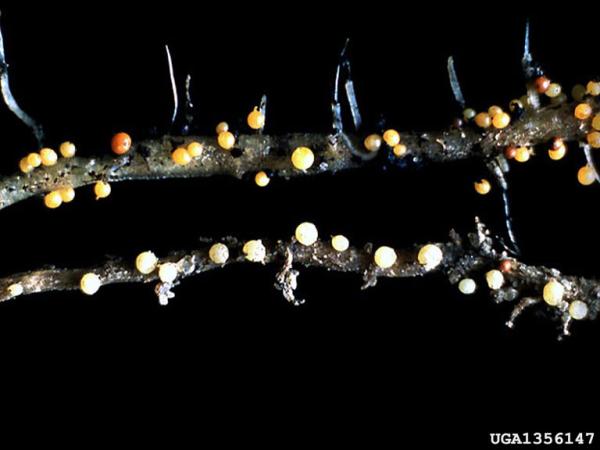Globodera rostochiensis (Wollenweber, 1923) (CABI)
Golden nematode, yellow potato cyst nematode
Formerly known as Heterodera rostochiensis
South America (Boucher et al. 2013)
First discovered in Long Island, New York in 1941 (Brodie and Mai 1989)
Possibly transported on military equipment returning from Europe after World War I (Brodie and Mai 1989)
Capable of causing a 100% loss in potato yields (Brodie and Mai 1989)

Comparison of Globodera rostochiensis and Globodera pallida: females of G. pallida turn directly to brown cysts whereas G. rostochiensis females change from yellow to gold before they turn brown
Photo by Ulrich Zunke; University of Hamburg
Find more images
Spotlights
Distribution / Maps / Survey Status
Federally Regulated
All Resources
Selected Resources
The section below contains highly relevant resources for this species, organized by source.
Partnership
Federal Government
International Government
State and Local Government
Brodie, B.B., and W.F. Mai. 1989. Control of the golden nematode in the United States. Annual Review of Phytopathology 27:443-461.
Boucher, A.C., B. Mimee, J. Montarry, et al. 2013. Genetic diversity of the golden potato cyst nematode Globodera rostochiensis and determination of the origin of populations in Quebec, Canada. Molecular Phylogenetics and Evolution 69(1):75-82.
CABI. Invasive Species Compendium. Globodera rostochiensis. CAB International. [Accessed Sep 16, 2023].
 An official website of the United States government.
An official website of the United States government.